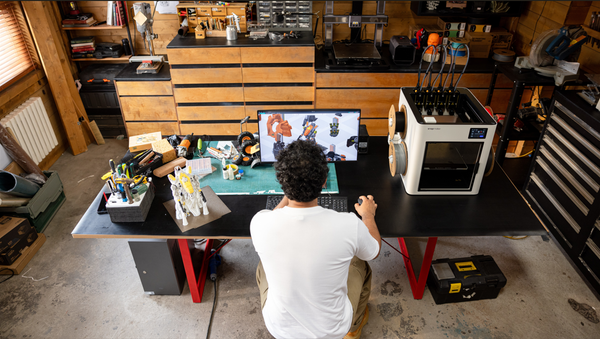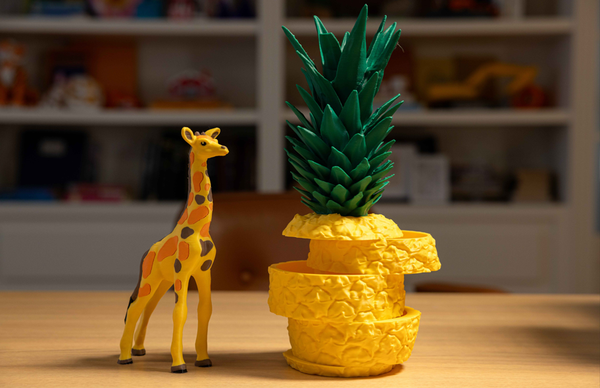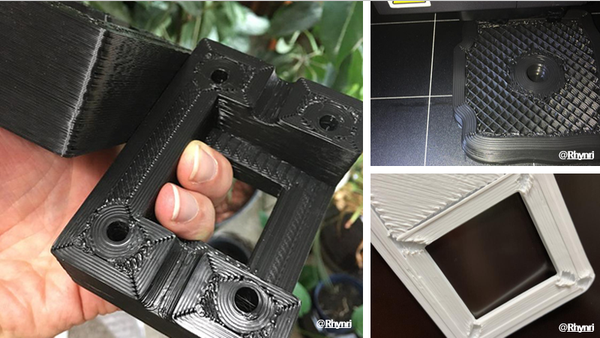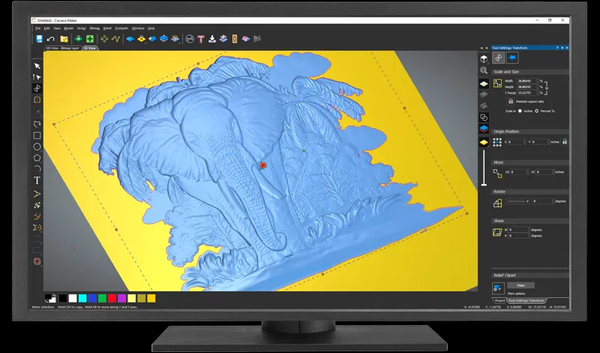Is a 3D Printer Worth It? (Especially a 3-in-1 3D Printer)
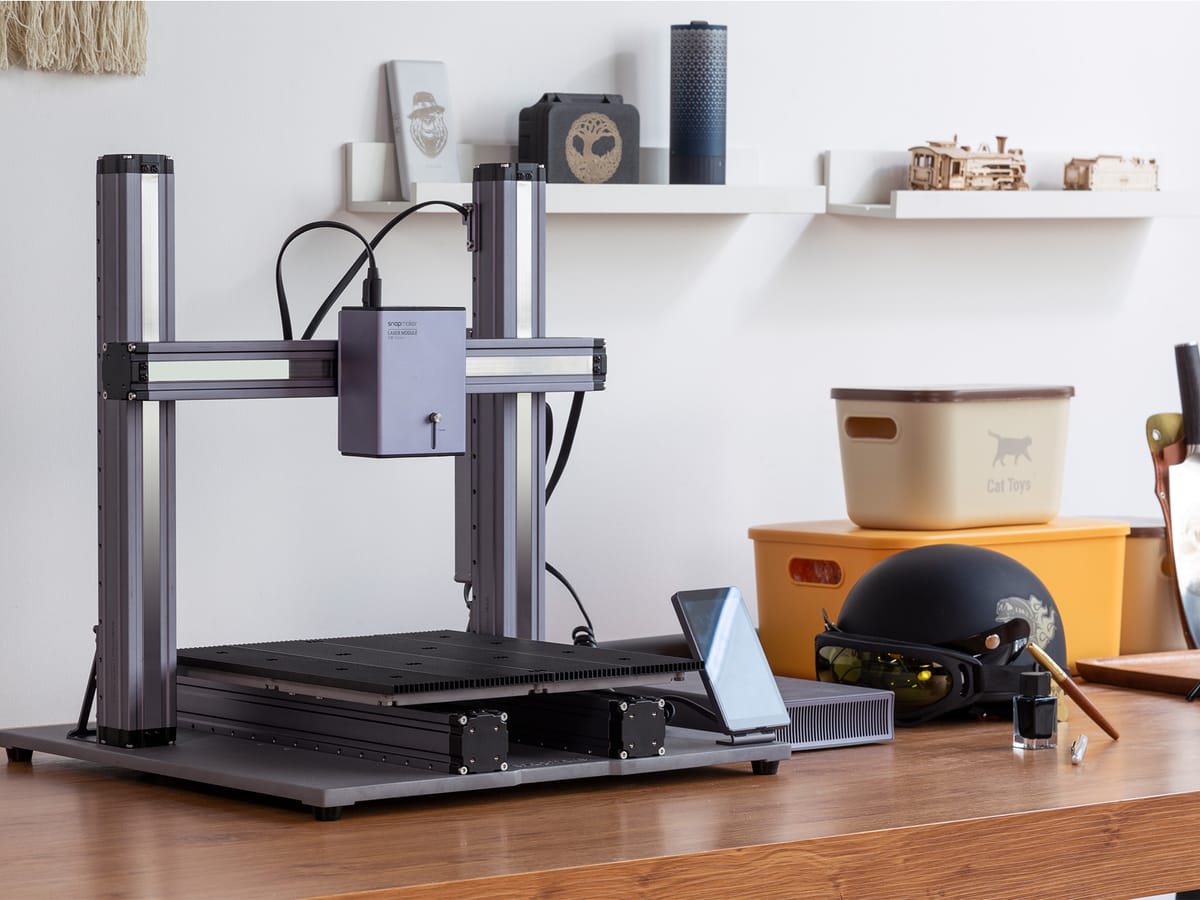
The 3D printer is undoubtedly the most trending equipment in the maker space. This is because they can print any digital image into a solid object. 3D printers are marvels of technology from which hobbyists and professionals draw great appeal. As creativity keeps coming, so does the need for more complex machines. Take the example of the 3-in-1 3D printer that can do 3D printing, CNC carving, and laser engraving. But is a 3D printer worth it? I mean, this is an intriguing question and situation. Let me clarify in detail!
Note: Here “3D printer” specifically refers to those using FDM (Fused Deposition Modeling) technology. Read Types of 3D Printers if interested.
Is It Worth Investing in a 3D Printer?
There's no beating around the bush on this one. Investing in a 3D printer is a good idea because it opens up new possibilities. Here is what you can expect to have within your reach:
Immediate Benefits:
- Fabricating quick solutions for everyday problems (e.g., hooks, holders, fixers)
- Creating personalized gifts or ornaments
- Educational projects and models
- Parts that can be used to repair household items
Long-term Benefits:
- Decreasing expenses in the future
- Enhancement of practical skills
- Being part of an expanding maker’s community
- Potential for small business opportunities
But is 3D printing all there is? If you desire to break free from the boundaries of plastics and delve into other creative aspects, a 3-in-1 3D printer is exactly what you need to place on your workbench.
Benefits of Having a 3-in-1 3D Printer
A 3-in-1 3D printer integrates all three aspects of 3D printing, CNC carving, and laser engraving into a modular machine. And here is what makes it unique:
- Space-Saving Design: Why pull a few machines around in your studio when there is a machine that does it all? A 3-in-1 printer saves your space.
- Cost-Effectiveness: Acquiring machines separately is quite a cost. A 3-in-1 machine gives you three machine capabilities at a single-machine price.
- Multifunctionality for Various Kinds of Work: A 3D printer with multiple functions can quickly adapt to numerous projects involving elaborate patterns or hard-edged constructions, which is great for enthusiasts who enjoy experimenting with their craft.
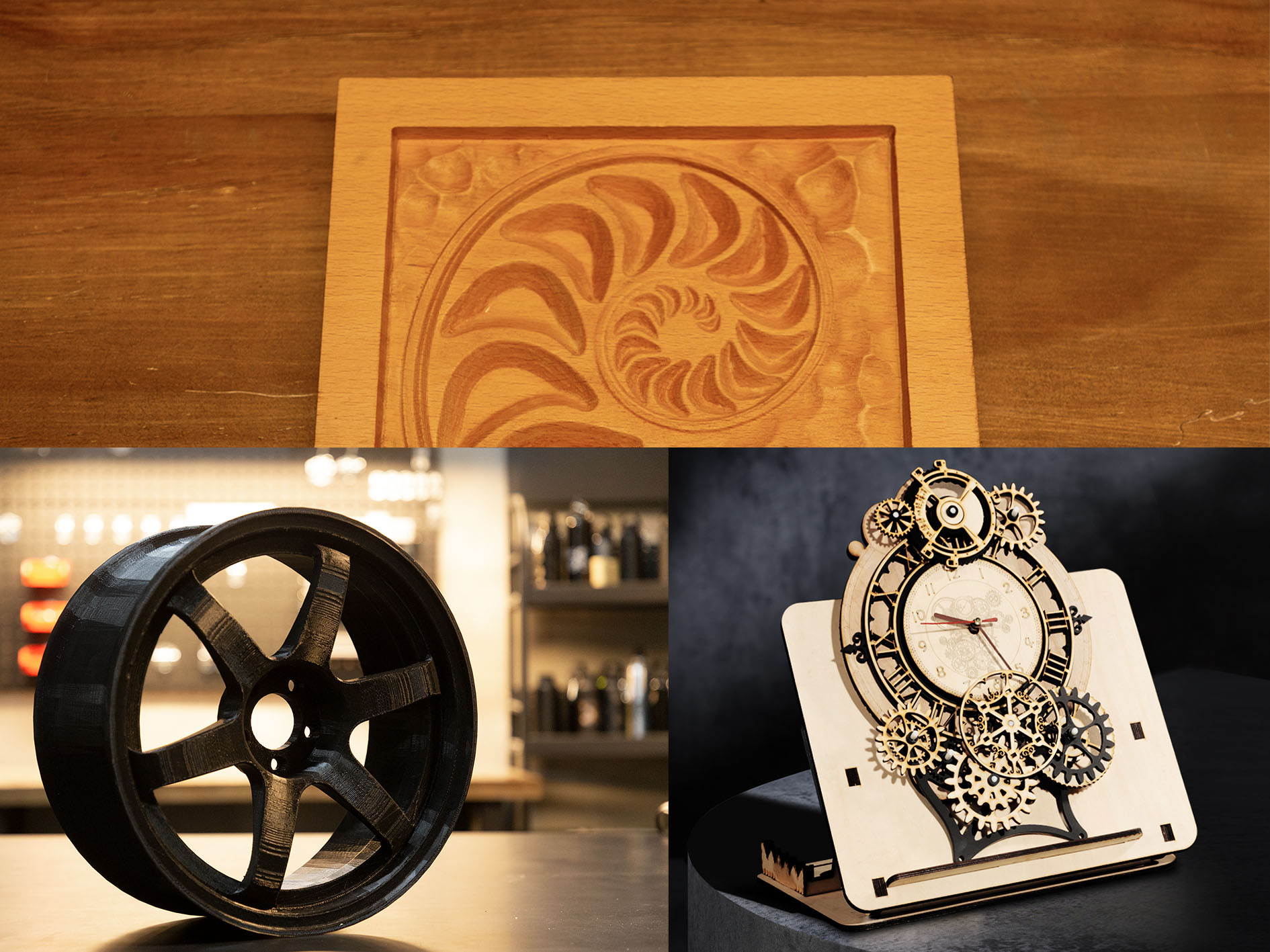
Explore More: Turn Your Desktop into a Workshop
3D Printing vs. Laser Engraving vs. CNC Carving
To comprehend the purpose of a 3-in-1 printer regarding one’s creative abilities, let us first examine these three activities separately:
- 3D Printing: A building technique in which a three-dimensional object is constructed in layers by adding material. It effectively creates solid models, unusual shapes, and other specific parts.
- CNC Carving: A machining cutting method that ‘chips’ away material from a solid block to form the figure desired. It is suitable for creating internal organs and details with profound relief.
- Laser Engraving: Another subtractive process that involves using lasers to burn or perforate designs onto surfaces made of all kinds of materials. In other words, it is particularly effective for surface embellishment and even provides decorative artwork.
A Comparison Table: 3D Printing vs. Laser Engraving vs. CNC Carving
| Aspect | 3D Printing | Laser Engraving | CNC Carving |
| Best For (Typical Projects) | Prototyping of complex shapes Custom parts Hollow objects | Surface decoration Custom artwork Marking/labeling Thin material cutting | Precise woodworking In-depth carving Functional parts Detailed reliefs |
| Materials | PLA PETG ABS TPU Specialty filaments Resin | Wood Acrylic Leather Paper Some metals | Wood Soft metals Hard plastics Foam |
| Learning Curve | Medium | Easy-Medium | High |
| Time Investment | Hours for larger prints | Minutes to hours | Hours for complex parts |
| Workspace Needs | Ventilation for some materials Stable surface | Good ventilation Fire safety measures | Dust collection Sturdy mounting |
| Key Advantages | Complex internal structures No material waste Unattended operation | Fine detail Fast operation Clean edges | Strength Precision Surface finish |
| Limitations | Layer lines visible Material strength Size constraints | Material thickness limits Can't do 3D shapes Fire risk | Material waste Noise Tool wear |
As can be seen from the table,3D printing is great for complex shapes with medium learning and hours of print time. Laser engraving excels in fast surface marking but is limited to thin materials. CNC carving offers precision but requires a high learning curve and produces waste.
Use Cases: How Can You Leverage a 3-in-1 3D Printer?
This is where the real magic begins: incorporating all those capabilities into your project. Below are some of the imaginative use cases of a 3-in-1 3D printer.
- Custom Furniture: Enjoy a well-organized and aesthetically pleasing environment with 3D-printed draw organizers, CNC-machined wooden racks, and laser-cut engravings.
- Intricate Parts: Make unorthodox geometric forms using 3D printing and experiment with laser engraving for decoration purposes afterward.
- Structural Components: For any given task, the primary structural parts are CNC carved, and intricate shapes are filled with 3D printing.
Recommended reading: How to make a box that utilizes all three functions of a Snapmaker 3-in-1 3D printer. The blog showcases a "Hills" box project. It provides step-by-step guidance on materials, design files, settings, and final assembly, allowing makers to combine the printer’s versatile functions into a functional art piece.
Supreme Verdict: Are 3D Printers Worth It?
The answer would be yes when put into more contextual terms—that is, the long-term value and creative possibilities that a 3D printer can bring to one's life. From single standalone models to versatile 3-in-1 machines, investing in 3D printing technology would significantly improve DIY projects, stimulate the imagination, and even start small business ventures. So, if you have been thinking about whether a 3D printer would do for you, now is the best time to dip your toes and unleash your creativity.
FAQ
Q: Can I buy a 3D printer if I don’t know 3D modeling?
Yes. Not knowing 3D modeling is definitely not a restriction for using a 3D printer. Many beginners start by:
- Using pre-made models from sites like Thingiverse, PrintableS, or Cults3D
- Using simple design tools like Tinkercad (browser-based and very beginner-friendly)
- Turning to 3D printer manufacturer resources:
- Official tutorials like Snapmaker Academy
- Manufacturer YouTube channels
- Blog channel you are reading now, especially How Can You Make 3D Printer Models.
Interestingly, having a 3D printer may actually motivate you to learn 3D modeling, as you’ll likely want to create custom solutions or designs.
Q: What is the difference between cheap and expensive 3d printers?
The main differences between cheap and expensive 3D printers lie in build quality, features, and speed.
- Build quality: More expensive printers often have sturdier frames and better precision, leading to higher quality prints.
- Features: Higher-end models may include features like dual extrusion (for multi-color prints), heated beds (for better adhesion), and automatic leveling.
- Speed: Expensive printers generally print faster due to more powerful motors and advanced software.
Q: Is it hard to learn 3D printing?
Learning the basics of 3D printing is relatively easy. Once you have a printer, you can start experimenting with different settings and materials. However, creating custom and high-quality prints requires 3D modeling skills.

